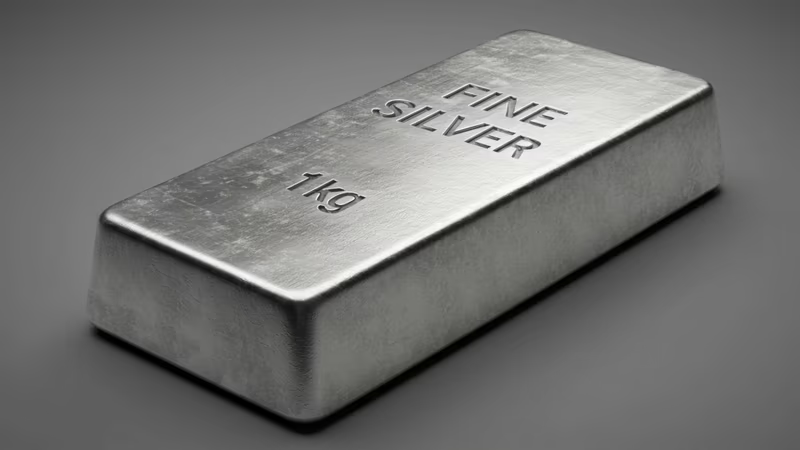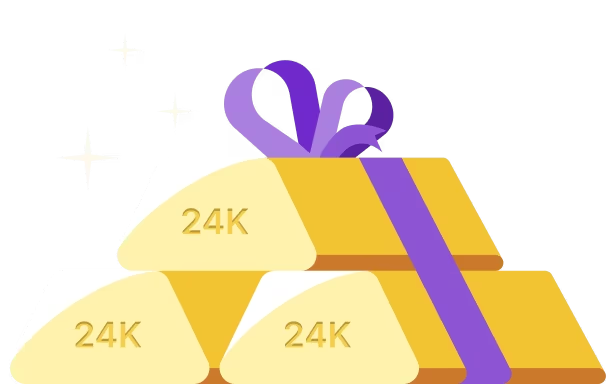Silver, often called the ‘poor man's gold’, holds significant cultural and economic value in India.
From intricate ornaments adorning brides to essential components in industrial applications, silver is a metal deeply embedded in the nation's fabric.
It has seen significant changes in its taxation landscape with the advent of the Goods and Services Tax (GST).
Understanding the nuances of GST on silver is crucial for both consumers and businesses. In this blog, we will provide a comprehensive overview, covering applicable rates, HSN codes, calculation methodologies and key implications for the silver industry.
GST Framework for Silver
Before GST, silver was subject to a fragmented tax structure, including excise duty and varying Value Added Tax (VAT) rates across states. The introduction of GST in July 2017 streamlined this.
Current GST Rates (2025)
As of 2025, the GST rates applicable to silver in India are as follows:
- On the Value of Silver (metal): 3%
- On Making Charges for Silver jewellery: 5%
This means that when you purchase silver jewellery, GST is levied on both the intrinsic value of the silver and the labour charges involved in crafting it.
HSN Codes for Silver and Silver Products
The Harmonised System of Nomenclature (HSN) code is a globally recognised system for classifying goods. For silver and its various forms, the primary HSN code is 7106. This code encompasses:
- 7106: Silver (including silver plated with gold or platinum), unwrought or in semi-manufactured forms or powder form
- 7106 1000: Silver powder
- 7106 91: Unwrought silver (including grains, others)
- 7106 92: Semi-manufactured silver (including sheets, plates, strips, tubes, pipes, bars, and other forms)
These sub-categories also generally attract the 3% GST rate on the metal value.
How to Calculate GST on Your Silver Purchase?
The calculation involves 2 main components: GST on the silver's value and GST on making charges.
Let's illustrate with an example:
Assume you are buying a silver ornament weighing 100 grams, with the current silver rate at ₹75 per gram. The making charges are ₹1,000.
- Calculate the Price of Silver: Price of Silver = Weight (grams) × Rate per gram Price of Silver = 100 grams × ₹75/gram = ₹7,500
- Calculate GST on the Price of Silver (3%): GST on Silver = 3% of ₹7,500 = (3/100) × ₹7,500 = ₹225
- Calculate GST on Making Charges (5%): GST on Making Charges = 5% of ₹1,000 = (5/100) × ₹1,000 = ₹50
- Calculate the Total Price of the Silver Ornament: Total Price = Price of Silver + GST on Silver + Making Charges + GST on Making Charges = ₹7,500 + ₹225 + ₹1,000 + ₹50 = ₹8,775
Therefore, the final price you pay for the silver ornament will be ₹8,775. This calculation applies to silver coins, bars and ornaments.
Check out our comprehensive guide on GST on gold in India.
Pre-GST vs. Post-GST: A Comparative Look
The transition to GST aimed to simplify the tax structure and improve transparency. Before GST, the tax on silver varied, often including a 1% excise duty and state-specific VAT (which could range from 1% to 5%). This led to price disparities across states.
Illustrative Comparison (Approximate Values for 1 Kg Silver)
|
Particulars |
Pre-GST Price (Approx.) |
Post-GST Price (Approx.) |
|
Silver Price (1 Kg) |
₹70,000 |
₹70,000 |
|
Custom Duty (if imported) |
₹7,000 (10%) |
₹7,000 (10%) |
|
Sub-total (A) |
₹77,000 |
₹77,000 |
|
Excise Duty (1%) |
₹770 |
- |
|
VAT (1% to 5%) |
₹770 - ₹3,850 |
- |
|
Total before GST |
₹78,540 - ₹81,620 |
- |
|
GST on Silver (3%) |
- |
₹2,310 |
|
Total Price of Metal |
₹78,540 - ₹81,620 |
₹79,310 |
|
Making Charges (e.g., 10% of metal value) |
₹7,000 |
₹7,000 |
|
GST on Silver Making Charges (5%) |
- |
₹350 |
|
Grand Total |
₹85,540 - ₹88,620 |
₹86,660 |
Note: The pre-GST figures are illustrative and vary significantly based on state VAT rates.
The post-GST regime has largely standardised the tax on silver across India, bringing more uniformity in pricing.
While the overall tax incidence might have seen a slight increase in some instances, simplification and transparency are notable benefits.
Other Types of Taxes Imposed on Silver
Beyond GST, other taxes may apply to silver:
- Capital Gains Tax: When you sell silver, any profit made is subject to capital gains tax.
- Short-Term Capital Gains (STCG): If silver is sold within 24 months of purchase, the gains are added to your total income and taxed as per your applicable income tax slab rates.
- Long-Term Capital Gains (LTCG): If silver is sold after holding it for more than 24 months, the gains are taxed at a flat rate of 12.5% (without indexation benefits) plus applicable cess.
- Silver ETFs: Gains from Silver Exchange Traded Funds (ETFs) are also subject to capital gains tax. From July 23, 2024, if held for 12 months or less, gains are taxed at 20% (STCG). If held for more than 24 months, gains are taxed at 12.5% (LTCG) without indexation benefits for FoFs, but 20% for direct silver ETFs.
What is the customs duty on gold in India in 2025?
Impact of GST on the Indian Silver Industry
The introduction of GST has had several impacts on the silver industry:
Formalisation and Transparency
GST has pushed the unorganised sector towards formalisation, bringing more transactions under the tax net. This has led to greater transparency in the supply chain.
Input Tax Credit (ITC)
One of the significant advantages for registered businesses is the ability to claim Input Tax Credit (ITC). Jewellers and manufacturers can claim credit for the GST paid on raw silver, other inputs and capital goods used in production.
This reduces the cascading effect of taxes. However, ITC cannot be claimed on the making charges when a jeweller is providing job work services to another registered person who will then sell the final jewellery.
When making charges are part of a composite supply (sale of finished jewellery), the 3% GST on the total value (metal + making charges) is applicable and ITC can be availed of on the underlying inputs.
Standardisation
Uniform tax rates across states have eliminated previous state-wise tax variations, leading to more standardised pricing and a level playing field for businesses.
Compliance Burden
While simplifying the overall structure, GST has introduced new compliance requirements, including regular return filing and accurate invoicing, which can be challenging for smaller players.
Build your wealth with digital gold savings on the Jar app.
Final Word
The implementation of GST on silver has brought about a significant shift towards a more standardised and transparent taxation system in India.
The flat 3% GST on silver metal and 5% on making charges have simplified the pricing structure, and it benefits both consumers and businesses.
Although the overall cost may have seen a slight increase compared to the pre-GST era, the ease of compliance and enhanced transparency far outweigh these marginal adjustments.
Frequently Asked Questions
1. What is the current GST rate on silver?
The current GST on silver in India is 3% on the value of the metal. Additionally, a 5% GST is levied on the making charges of silver ornaments.
2. What is the HSN code for silver and its products?
The primary HSN code for silver and its unwrought or semi-manufactured forms is 7106. Specific forms like silver powder (71061000), grains (71069110), sheets, plates, strips, tubes, and pipes (71069210), and silver bars (71069220) also fall under this main category.
3. How is GST calculated on silver jewellery with making charges?
Calculate GST on silver jewellery by first determining the value of the silver metal. A 3% GST is applied to this metal value. Separately, calculate the making charges, and a 5% GST is applied to these making charges.
4. How do capital gains taxes apply to silver investment?
Profits from selling silver are subject to capital gains tax. If silver is sold within 24 months of purchase, it is considered a short-term capital gain and taxed at your income tax slab rate. If held for more than 24 months, it is a long-term capital gain, taxed at 12.5%.
5. Is the GST rate on silver the same as on gold?
Yes, the GST on silver is the same as on gold. Both precious metals attract a 3% GST on the value of the metal and a 5% GST on the making charges.










